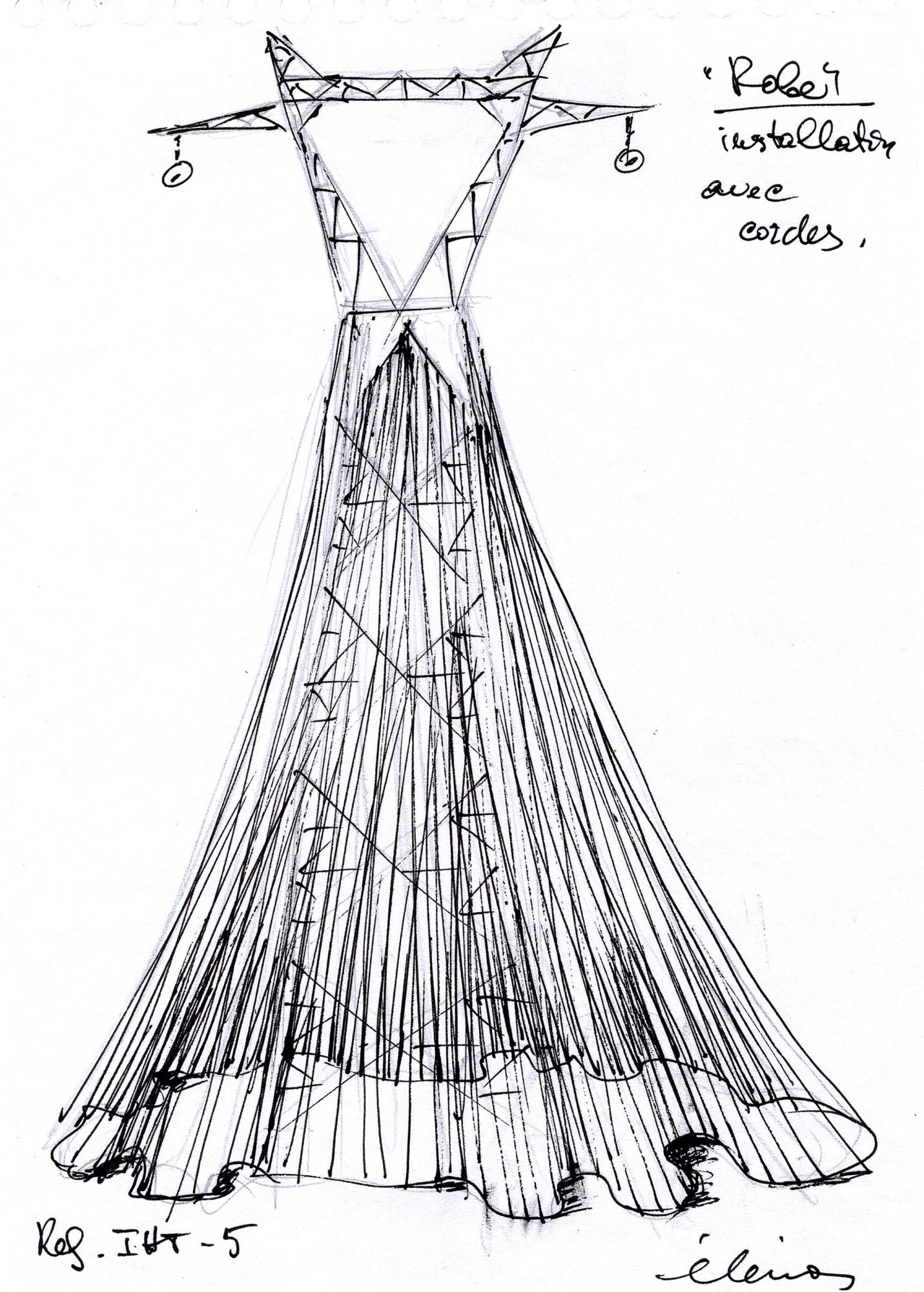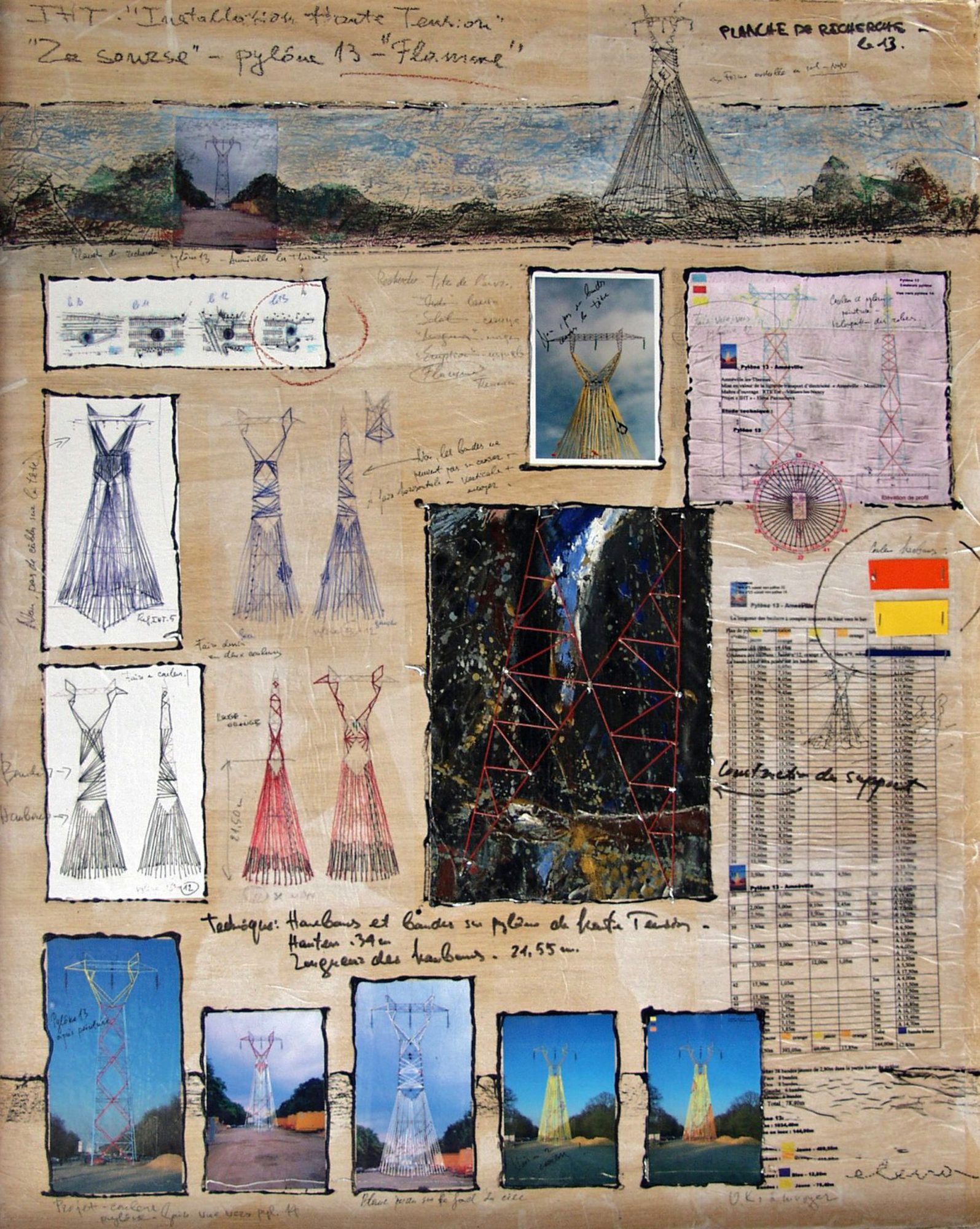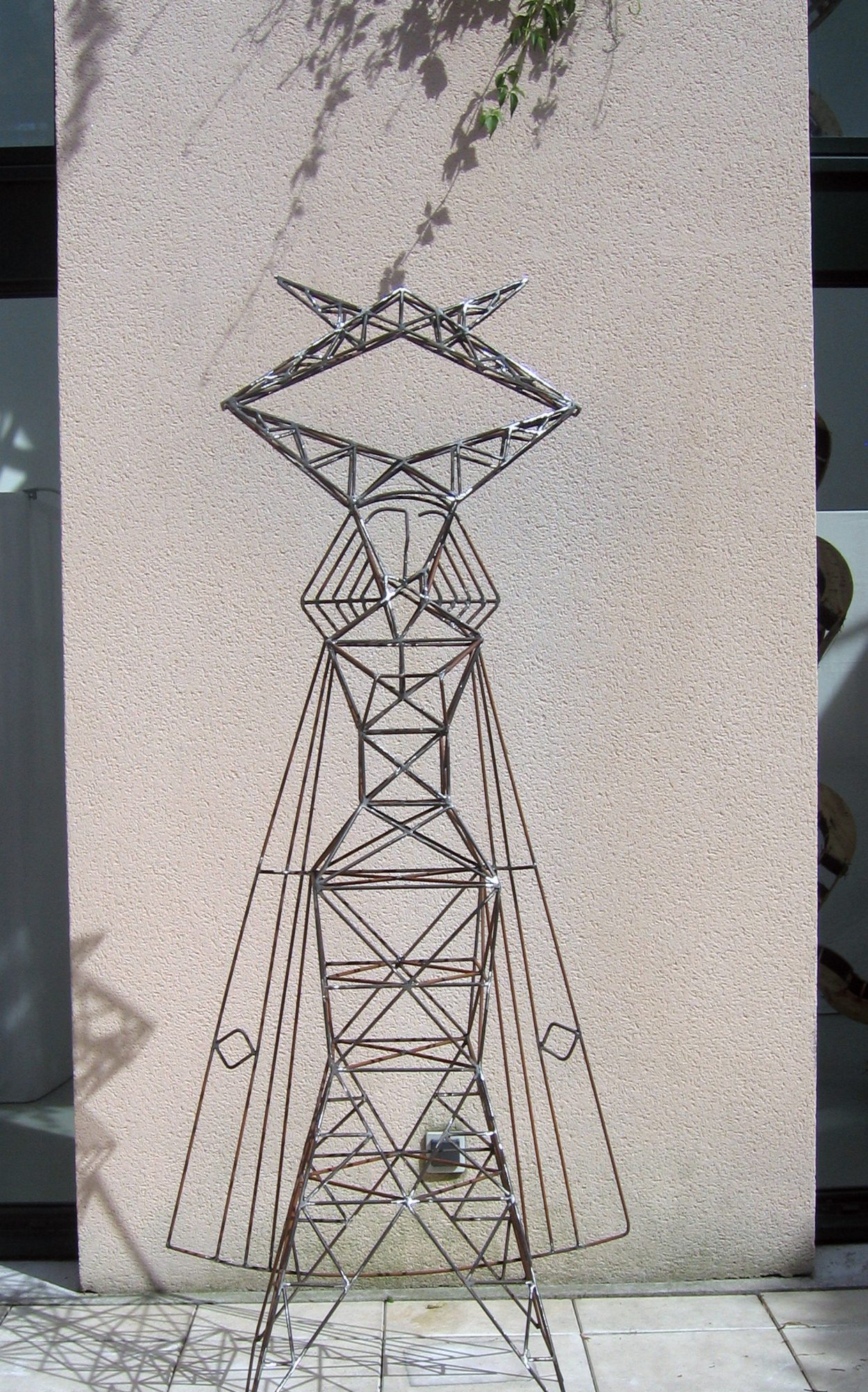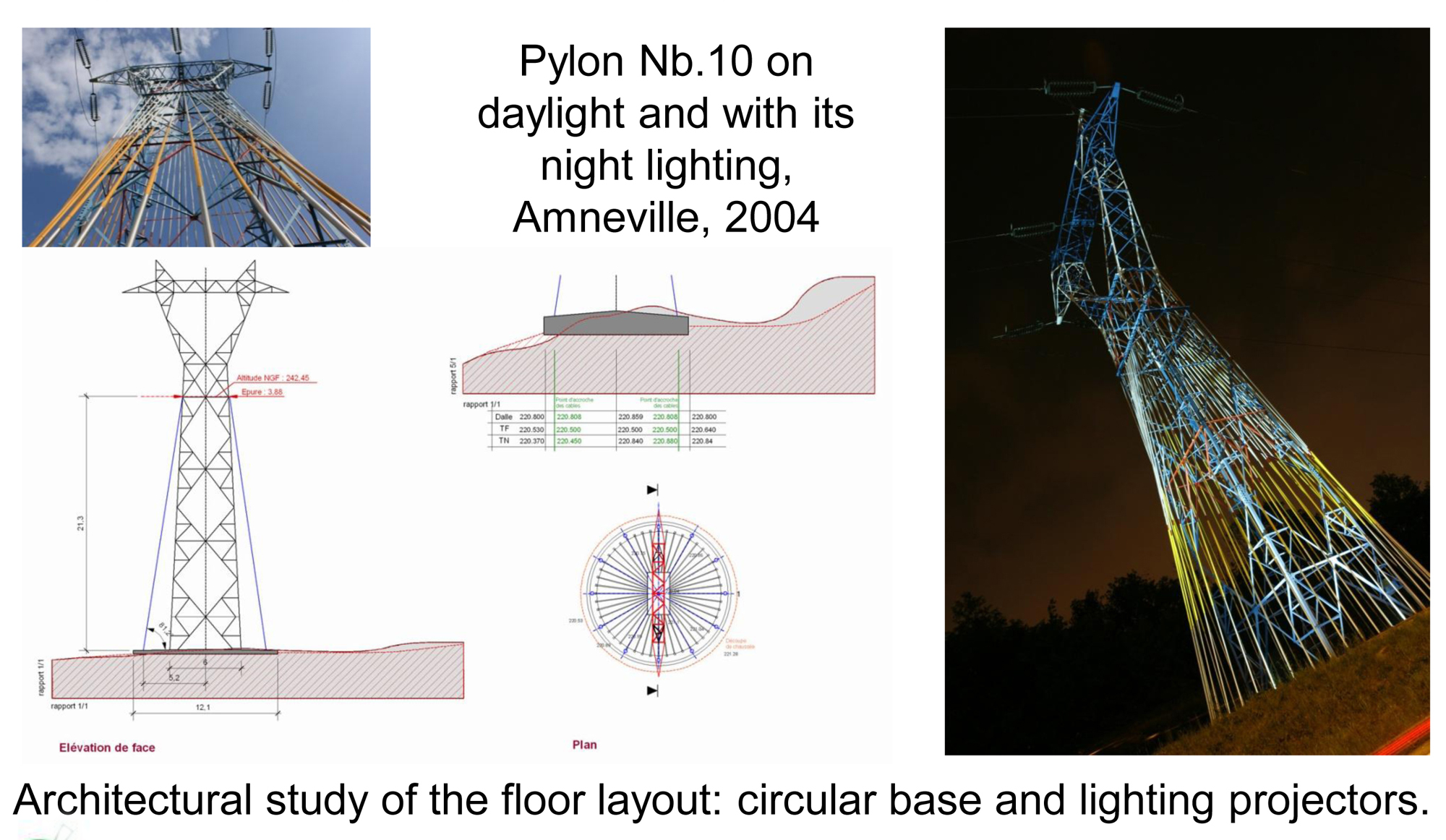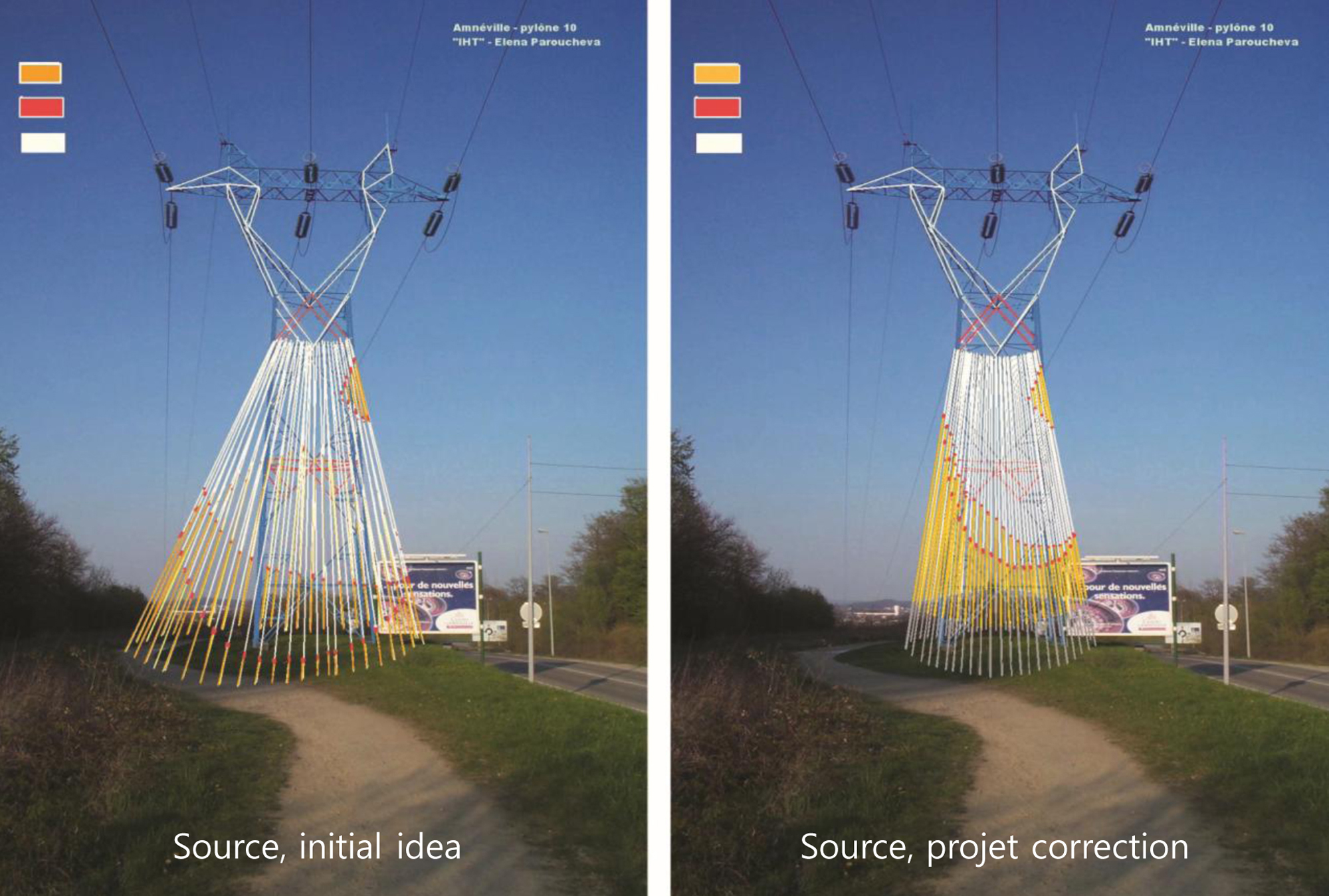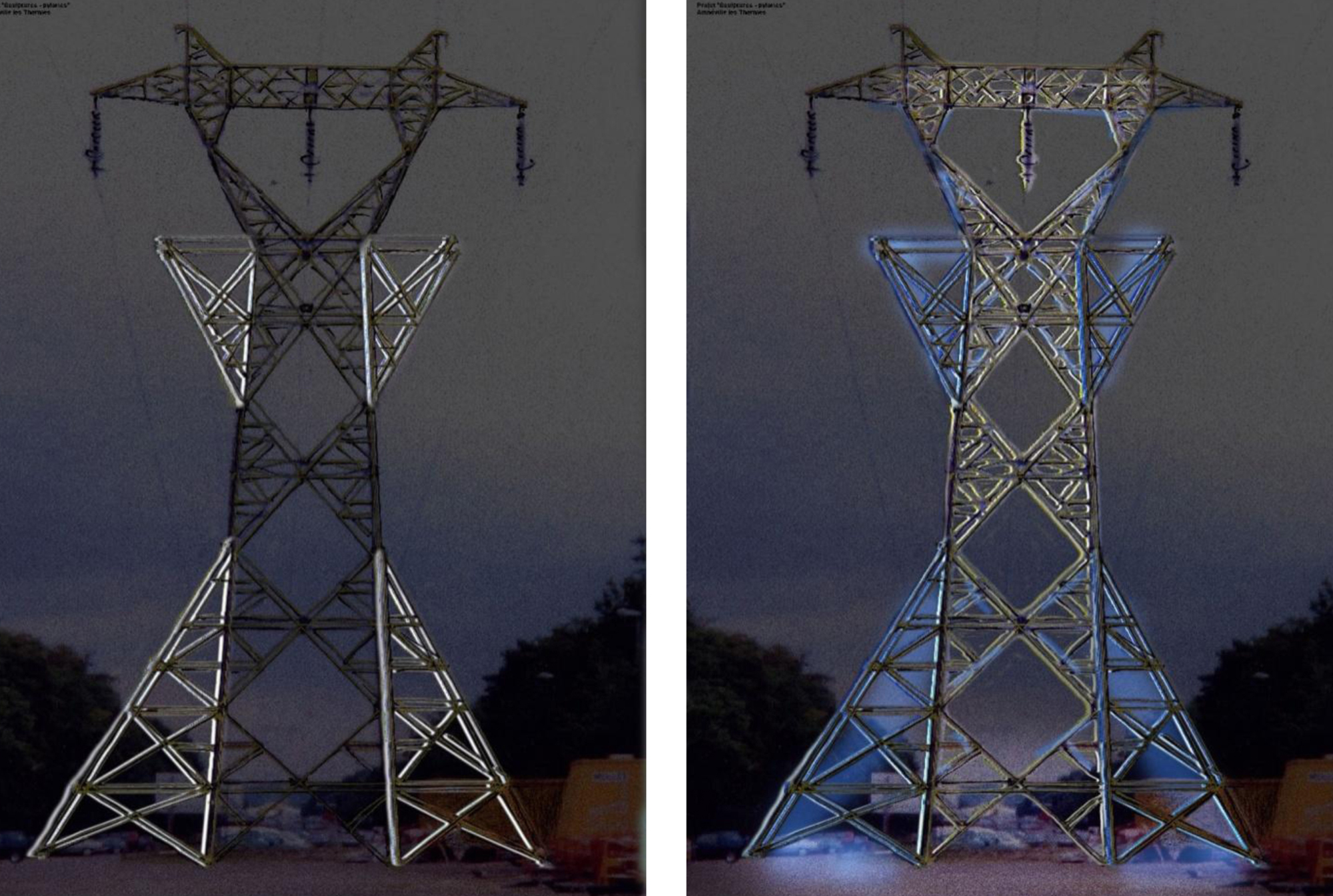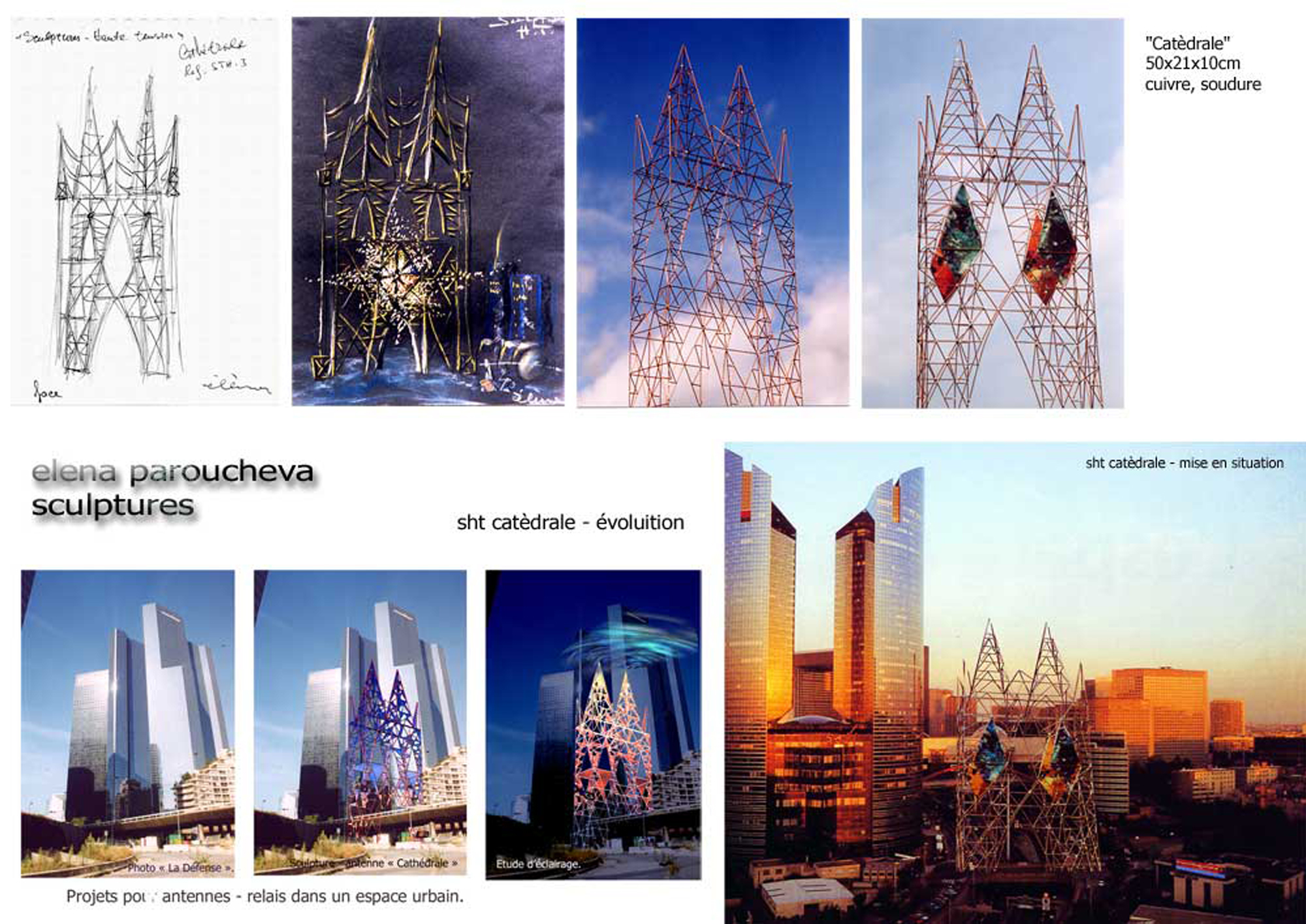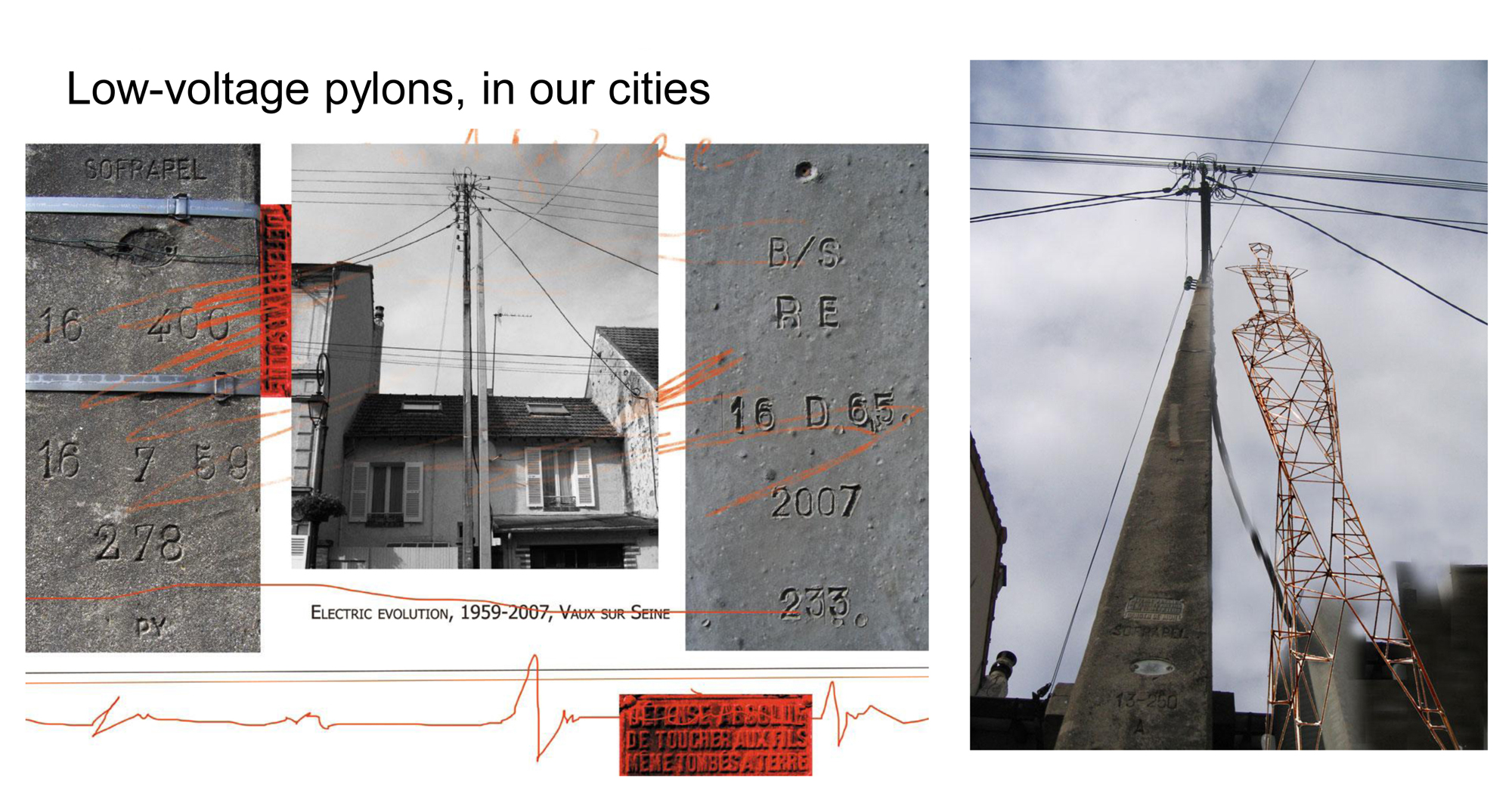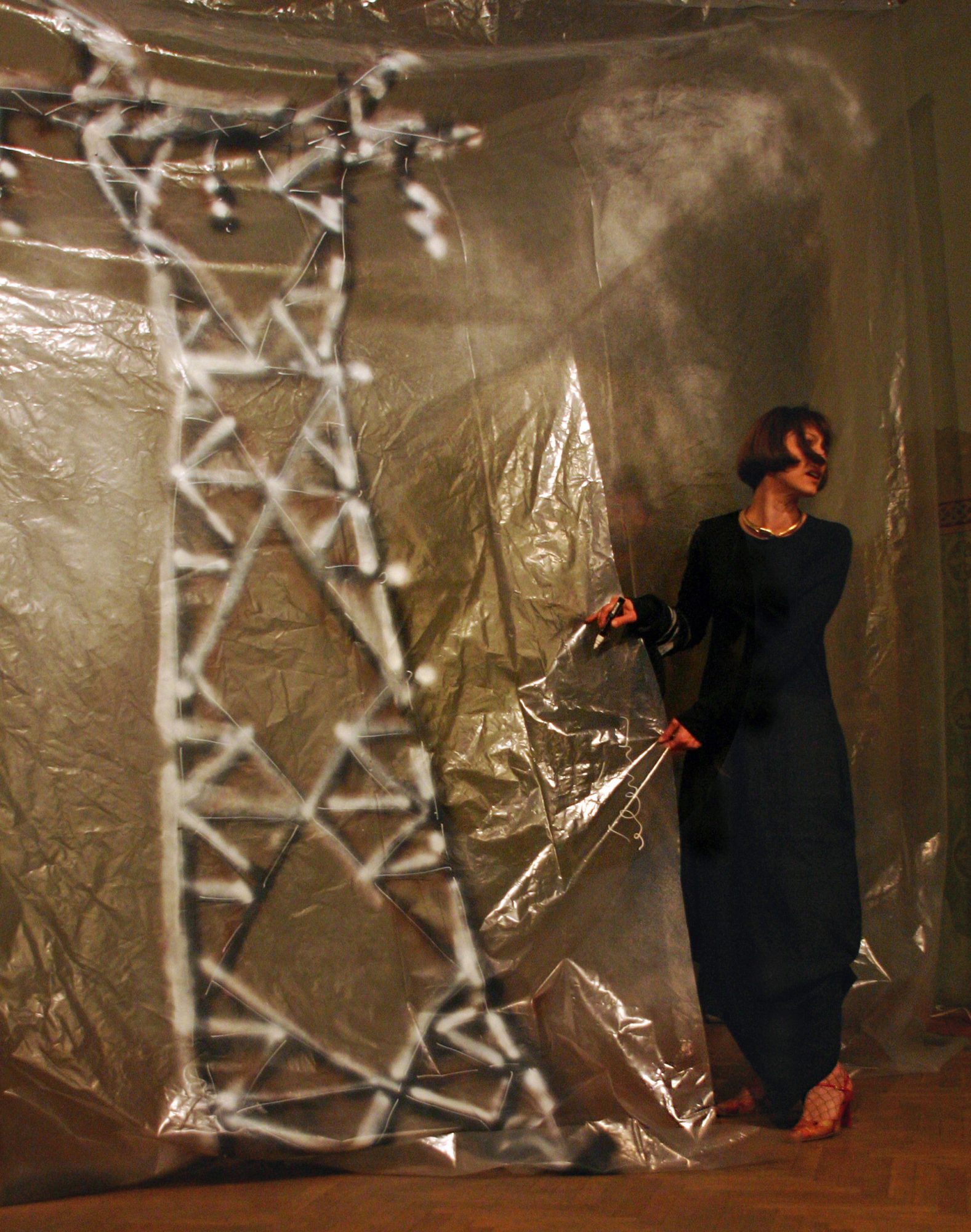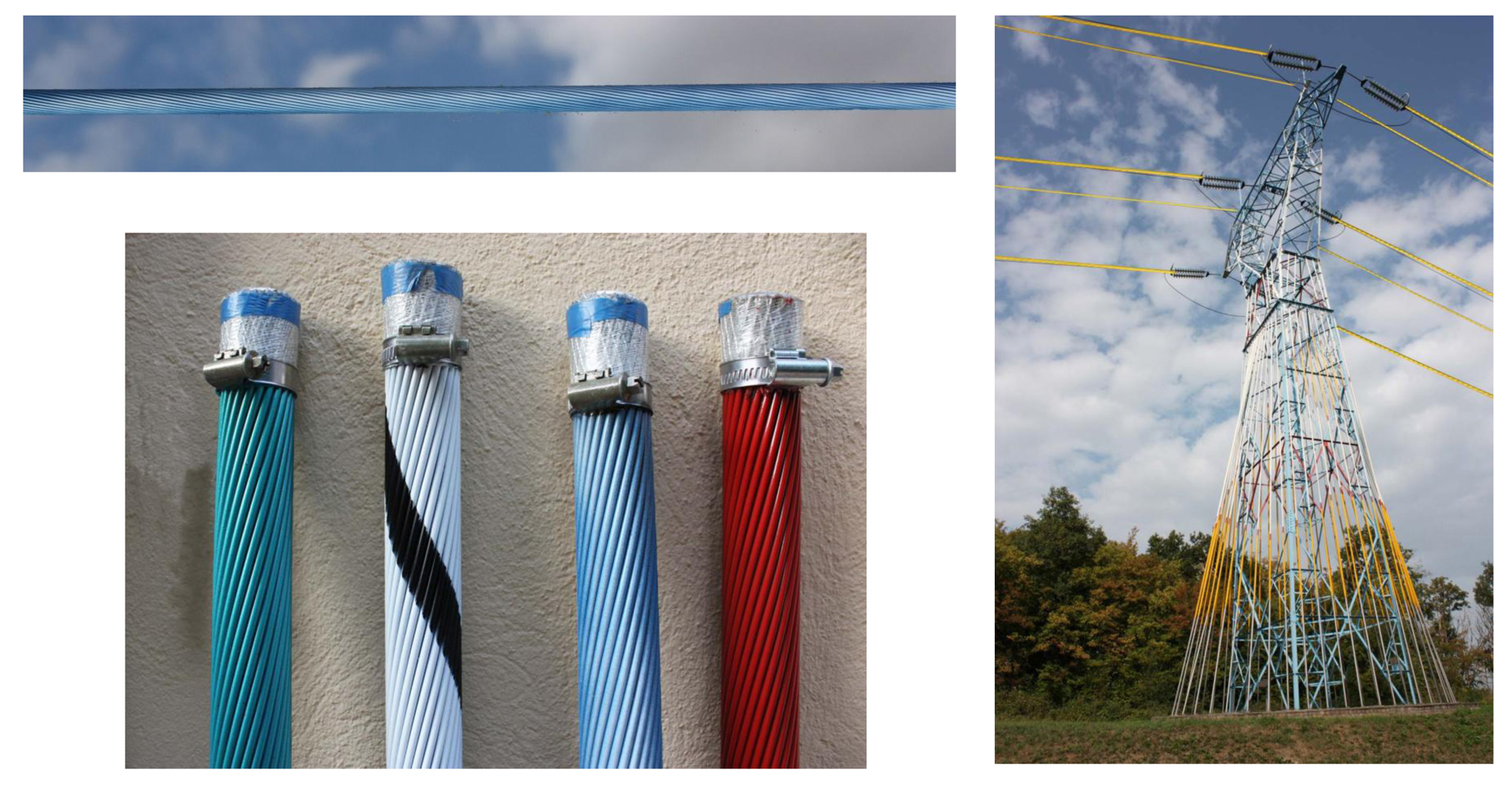
Electric Art
– Landscape towers for electricity pylons, telecom towers and wind masts, is a concept I created in 1999. To me, Art-Pylons are not only a unique work of art but they are a testimony of an artist’s dream come true, and technical challenges overcome. They prove that we – as artists – can create a pleasant environment and change the face of the planet.
But how does the path from idea to realization turn, how does a work evolve between drawing and monumental work?
Here a selection of images that show the birth of a work: the search on the symbols associated with the site, the evolution of the project, the respect of the technical constraints…
Building of an Art-Pylon
The basis of my building conception is the lattice module, which guarantees the stability and solidity of the pylons, making it possible to create novel shapes and silhouettes.
The two major stages of implementation are: the project, and the construction.
Project stage
At the project stage there are: artistic designs, feasibility checks, sculpture modelling, selection of colours and materials, and lighting.
The power grid towers become environment-friendly because they are inspired by the history and culture of the country. (Viking Pylon for Norway, drawing, 2015).
The pylons are environment-friendly because they are created for real and unique sites, as symbols of our times – times of steel and concrete. They are our menhirs, or cathedrals, and will remain in the history of art and electricity (Funny Pylon for California, Deer for the Russian landscape, or mask pylons for Peru).
Sustainable, they seek inspiration in the traditions and landscape of a country (Flower towers and Bird-tower for Holland).
Building stage: custom-made pylons
The construction stage is in compliance with technical, climatic, electric and mechanical constraints. The artist works in partnership with engineers, architects, lighting designers.
Respect of the technical data: teamwork is paramount. The artist must respect the technical requirements of the engineers. Here an example of a correction of an installation following a technical study which shows that a pylon that carries the turn of the line will not support an asymmetrical dress.
Modelling: element addition to give pylons a new form – humanoid pylons – and provide them a feasibility certificate. Here are steps in the construction of the Sochi skier (2013), Amarelus humanoid pylon (2003).
Study of light: study of light for a 225,000 volt power line support, drawings, 2002.
Architectural study: study of the floor layout – circular base and lighting projectors. Here is Pylon nb10 on daylight and with its night lighting, Amneville, 2004.
Selection of cables: colourful cables, tinted in the bulk, for a better integration, project, 2010.
New materials and technical inventions: while building Source (Amneville, 2003), Buitink Technology developed a device for measuring the tension of steel cables, especially for that artwork.
Advantages and cost efficiency
Here are some comparison criteria between the Art-Pylon and the other existing solutions:
- Impact on the landscape: The Art-Pylon fits into the landscape, Il is the only one which is personalized according to the environment.
- Sustainable Development: It is designed to be Aesthetic, It is inspired by the local culture and History.
- Cost: Costs of the Art-Pylons over the traditional lattice is limited to the artistic conception (only once for a project) and to the lighting. It is estimated that overhead lines cost from 3 to 5times less than underground networks. And lattice-based Art-Pylons are much cheaper than those made with composite materials.
- Lifetime: Art-Pylons have the same lifetime than the traditional lattice pylons, the only proven lifetime, so far.
- Opportunity and feasibility: The Art-Pylons are based on the proven concept of the traditional lattice ones. The underground network is not always possible because of the soil nature. Wind turbines require some wind.
As far as cost is concerned, it is impossible to give accurate figures because the cost depends on the height of the sculptures, the number of pylons to be constructed, the cost structure of constructors from different countries, etc. But a study and estimation can be delivered on demand.



